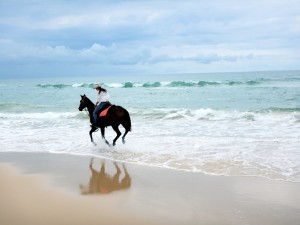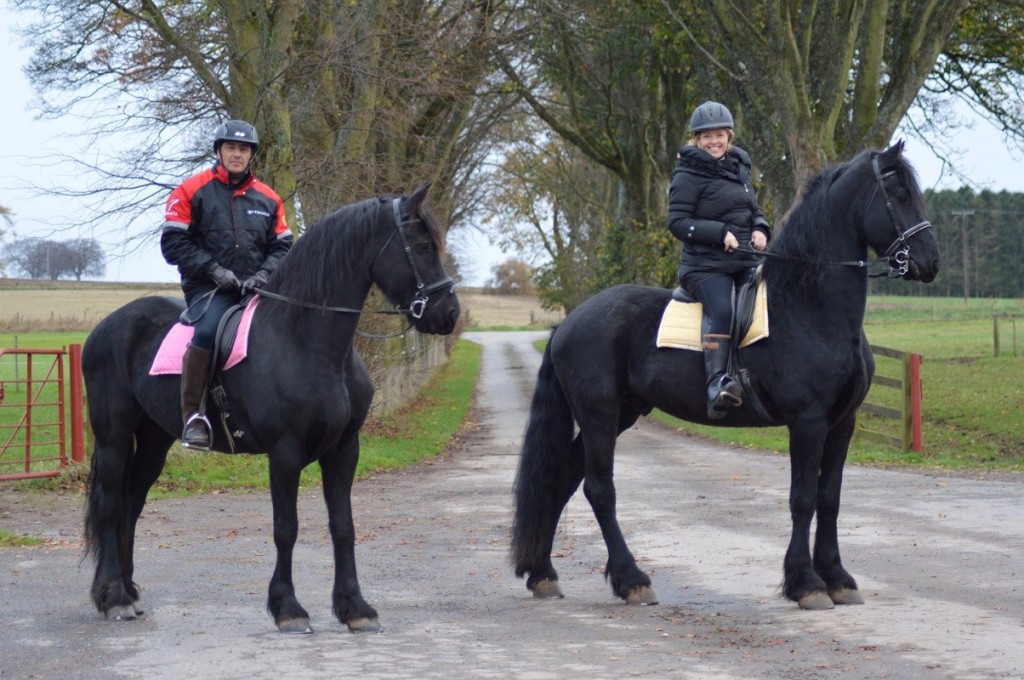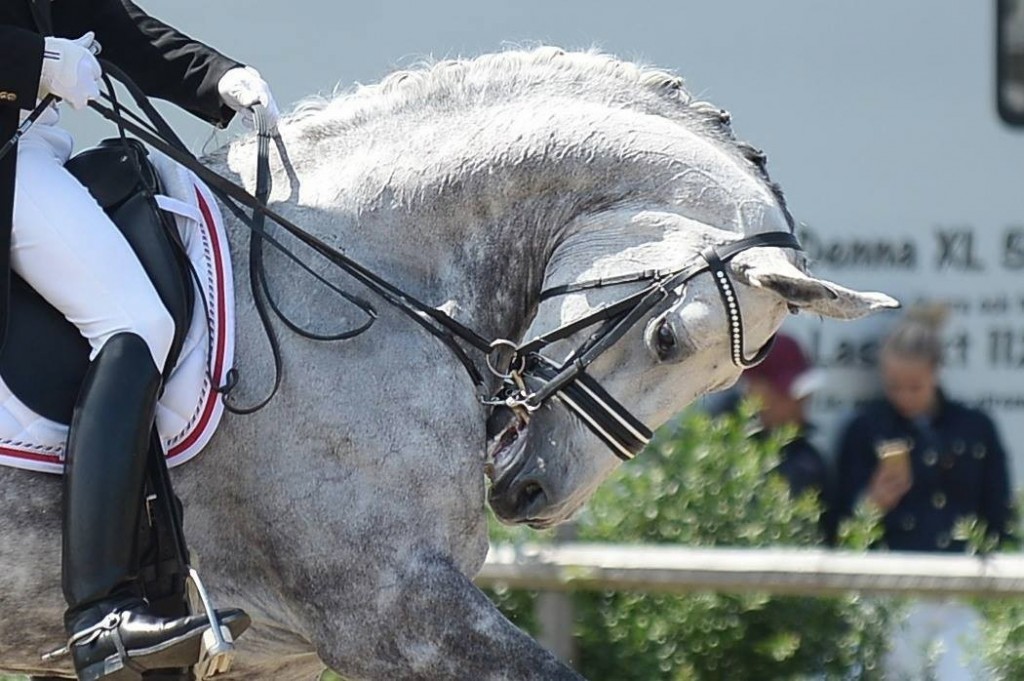
Understanding Winter Rugs

Understanding Winter Rugs -Rugging horses can be a little confusing – there are a wide variety of styles to choose from and the different numbers on the packaging sometimes don’t give a lot of detail as to what exactly is being referenced. If you are looking at a winter synthetic rug then there are two main descriptions that should to be understood to make the correct decision in purchasing your rug – the denier count and also the polyfill.
DENIER

Denier refers to the strength of the outer shell of the material – or how tightly the material is woven. Waterproof turnout rugs generally start at 600 deniers (600D) for a low cost, entry-level rug. These rugs are great
if you have a horse that doesn’t have anything (including friends) in his or her paddock that could potentially rip or tear the rug.
From there the denier goes up to 1200D which is great for horses that are a little harder on their rugs, have paddock companions who might give a nip here and there or trees to catch their rugs on.
These are the three main denier counts and although some brands have different strengths available it’s easy to make an informed choice as the higher the number, the stronger the outer shell of the rug will be.
In general, the denier count does not reflect the waterproof qualities of the rug as this is actually a layer that is applied to the underside of the outer fabric (sometimes also applied to the outside of the outer layer) – however it is thought that a tighter weave will repel water better.
WeatherBeeta’s minium standard is 1200D, with an entry level WeatherBeeta Genero 1200D Combo. They have a fantastic rug available for horses that are prone to ripping their rugs with the WeatherBeeta Freestyle 1680D Detach-a-Neck Heavy. Alongside it’s super strong ballistic nylon outer, it also has a Teflon coating, which helps to repel dirt and water. This rug is sensational especially in the detach-a-neck version and is jam packed full of WeatherBeeta’s Freestyle features.
POLYFILL
 Polyfill refers to the weight of the rug – or warmth. This can vary anywhere from a non-fill rain sheet to a super thick 350g – 400g polyfill or anywhere in between. Polyfill is a polyester filling that is used between the waterproof outer layer and an inner layer that is sometimes made out of a satin style or cotton lining. Capturing little pockets of air in the polyfill filling generates warmth; so the more polyfill within the rug the warmer your horse will be.
Polyfill refers to the weight of the rug – or warmth. This can vary anywhere from a non-fill rain sheet to a super thick 350g – 400g polyfill or anywhere in between. Polyfill is a polyester filling that is used between the waterproof outer layer and an inner layer that is sometimes made out of a satin style or cotton lining. Capturing little pockets of air in the polyfill filling generates warmth; so the more polyfill within the rug the warmer your horse will be.
The general weights are no fill, 100g, 180g, 220g, 300g and 350g. The weight that you should choose really depends on your horse’s normal temperature range, living conditions and how many rugs you are planning on using. If you work off the higher the number, the warmer the rug you should be able to chose something suitable for your horse’s situation.
A great medium weight rug is a 220g polyfill, which the WeatherBeeta brand has a great value rug with the WeatherBeeta Original 1200D Standard Neck Medium, available in a Medium Weight 220g – this will do most pleasure horses throughout winter and as it doesn’t have a neck rug it will also ensure that your horses won’t get too hot and rub out their manes.
SIZING FITTING
 Horse rugs are measured in feet in Australia and the UK, which go up in 3-inch intervals. For example, you can have a 5’0, 5’3, 5’6, 5’9 and from there it goes up to a 6’0. The rug is measured from the point of the chest where the rug would meet, around the horse and to its quarters where you would expect the rug to finish. Some rug sizes are more generous in the shoulder/neck then others, and this must be taken into account when buying your rug.
Horse rugs are measured in feet in Australia and the UK, which go up in 3-inch intervals. For example, you can have a 5’0, 5’3, 5’6, 5’9 and from there it goes up to a 6’0. The rug is measured from the point of the chest where the rug would meet, around the horse and to its quarters where you would expect the rug to finish. Some rug sizes are more generous in the shoulder/neck then others, and this must be taken into account when buying your rug.
In the USA, the sizing is a little different as the size is measured in Inches and usually in 2-inch increments (66”, 68”, 70”, etc.) however the method of measuring your horse is still the same. Another measurement is the European way of sizing the rug that is from the point of the wither to the quarters just above the tail – this is measured in centimetres and in New Zealand they measure the same way however it’s in feet.
FITTING
 A great fitting rug should be snug around the neck, so not to slip back over the withers and cause pressure sores. Although you do not want the chest to be too tight as this will prohibit the horse from lowering his or her head easily to graze. The rug should also have room in the shoulders to allow the horse freedom and not rub and develop hair loss or even sores at the point of the shoulder. The seam where the rug meets the tail flap should finish just above the start of the horse’s dock. Leg straps should be looped over to form a figure-of-eight to ensure that the rug stays put if the horse rolls or the rug starts to slide. They should not be too tight as they need to allow the horse to be able to walk, trot and canter but also shouldn’t be so lose that they hang over the hock.
A great fitting rug should be snug around the neck, so not to slip back over the withers and cause pressure sores. Although you do not want the chest to be too tight as this will prohibit the horse from lowering his or her head easily to graze. The rug should also have room in the shoulders to allow the horse freedom and not rub and develop hair loss or even sores at the point of the shoulder. The seam where the rug meets the tail flap should finish just above the start of the horse’s dock. Leg straps should be looped over to form a figure-of-eight to ensure that the rug stays put if the horse rolls or the rug starts to slide. They should not be too tight as they need to allow the horse to be able to walk, trot and canter but also shouldn’t be so lose that they hang over the hock.
Most surcingles (belly straps) are also designed to crossover under the horse’s stomach and should be snug (a hand should be able to slide easily in between the strap and the stomach though) so as not to catch the horse’s leg when getting up.
With a better understanding about the different terms used with synthetic rugs and how they should fit, you should be able to decide easily on what strength and warmth would suit your horse best. Now the only hard part is to decide what colour you want to choose – which the WeatherBeeta brand make difficult with a massive range to choose from. Find your HORSE TYPE at weatherbeeta.com and try our online RUG USER GUIDE (R.U.G) to help you find the perfect rug.





